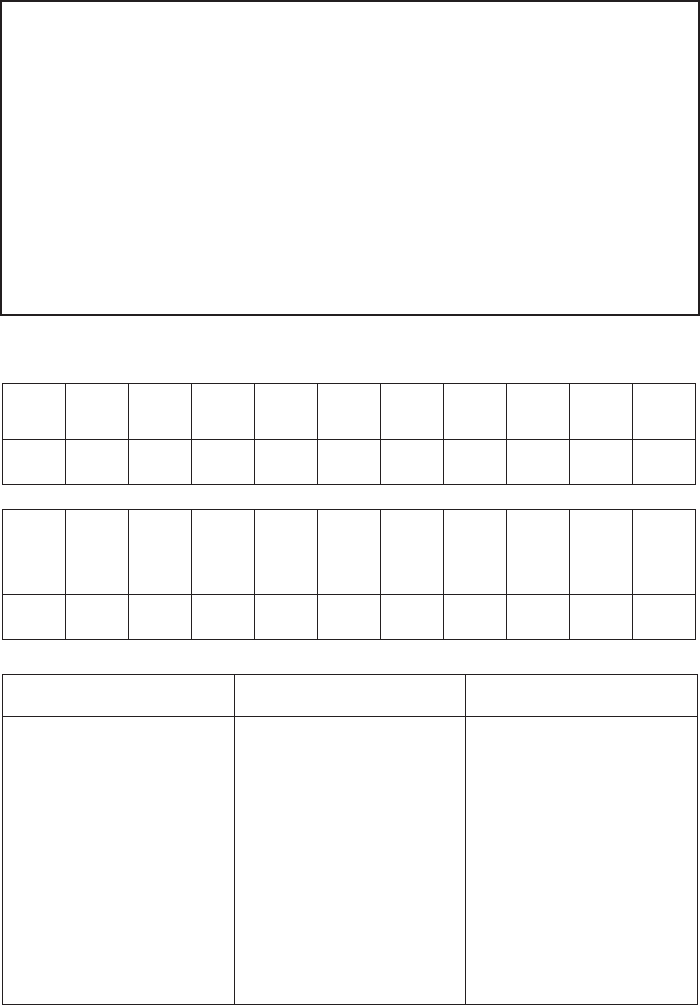
Copyright © 2017 by American Reading Company®
Bk: Skills Card
Comprehension: Support answers with evidence from the text.
Literature Informational Text
1. Using specic details from the
text, describe in depth:
• a major character.
• a minor character.
• the narrator (1st or 3rd
person).
• the setting (time, place,
historical era).
• a key event.
2. Retell the key events of the plot
in chronological sequence.
3. What is the theme of the text?
How do you know?
4. What other things have you read
with a similar theme? How does
this compare?
5. What form (genre) of literature
is this? How do you know?
Describe its basic structural
elements.
6. Tell the author’s main idea in one sentence.
7. List the key facts and ideas that support the
author’s main idea.
8. Summarize the information presented.
Tell exactly what happened and why. Use
specic information from the text.
9. What do you think is your author’s opinion or
perspective on this material? How is it dierent
from yours?
10. How did the author organize the information
(e.g., chronological order, compare/contrast,
pro/con, cause/eect, problem/solution,
exposition)?
11. Was this a rsthand or secondhand
account? How do you know?
12. Explain one of the graphic features in
the text (charts, graphs, diagrams, time
lines, maps, tables) and describe how the
information adds to the rest of the text.
Range of Reading
1. Complete a chapter book each week.
2. Get hooked on a series or author and go on a reading binge.
3. Read for an hour a day, including 30 minutes at home without anyone reminding you.
4. Read biography, contemporary ction, traditional tales, poetry, drama, science, and history.
5. Read silently, faster than you can talk, but with good understanding.
Reader: Room:
*223992*
SC-CCR-V8-BK
Vocabulary & Language
• Context Clues: notice new words or phrases and use context clues to hypothesize meaning.
• Synonyms/Antonyms: come up with synonyms/antonyms for words in text.
• Distinguish shades of meaning between potential synonyms (e.g., whispered vs. grumbled).
• Word Parts: use Greek/Latin axes and roots as clues to the meaning of a word.
• Figurative Language: nd an example of gurative language (e.g., simile or
metaphor). Describe its meaning and eect.

Copyright © 2017 by American Reading Company®
Bk: Academic Vocabulary
Use Greek and Latin roots to help you solve unknown words.
anim
aqua,
hydr
ast aud bio cap cycle chron dent graph hydr
life,
spirit
water star hear life head circle time tooth draw,
write
water
mega meter ped phon port photo
ques,
quer,
quis,
quir
scrib
spec,
scope
tele therm
large,
great
measure
foot sound carry light ask write see far o heat
Using Context Clues: How to Figure Out New Words
. Notice a new word. (After trying several different pronunciations, if it still doesn’t
sound familiar...)
. Use what you know and clues in the text to figure out what the new word might
mean.
. Come up with a likely synonym (or a short definition) for the new word that would
make sense.
. Reread the sentence, replacing the new word with your synonym.
. If the meaning of the sentence is unchanged, your synonym is probably correct. If
not, try again.
Unknown Word Greek/Latin Root is word might mean...
